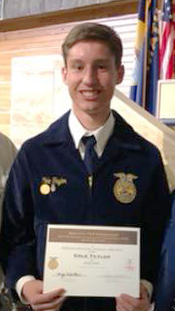Podcast Summary
BBC and NPR Provide Thought-Provoking Stories, Seek Audience Feedback: BBC and NPR offer unique perspectives and encourage audience engagement through feedback surveys, while the murder hornet, a dangerous new arrival to the US, has experts like Sammy Ramsay sharing insights on its impact and behavior.
The BBC is a valuable source of information and inspiration, providing stories that make us think rather than telling us what to believe. NPR is also seeking audience feedback through a short survey available at npr.org/podcastsurvey. In the news, the murder hornet, a large and aggressive species of hornet, has made its way to the United States, causing concern due to its powerful sting and decapitation of prey. Entomologist Sammy Ramsay, also known as doctor Bugs, has dealt with these hornets firsthand during his bee research in Thailand, where they decimated entire colonies. Sammy has given multiple interviews about the murder hornets in the past few days, as the media and public attention to this issue continues to grow.
Understanding the Impact of Murder Hornets: Murder hornets pose a threat to honey bee populations and agriculture, but a single sting from one is unlikely to be fatal for humans. Protective gear is essential when dealing with these insects, and ongoing research aims to mitigate their impact.
While murder hornets are named for their aggressive behavior and large size, a single sting from one is not likely to result in a fatal effect for humans. Sammy's encounter with hornets serves as a reminder of the importance of protective gear when dealing with these insects. However, it's essential to acknowledge the potential danger they pose to honey bee populations, which are crucial for pollination and food production. The episode also highlights the ongoing efforts to understand and mitigate the impact of these hornets on ecosystems and agriculture. Additionally, it's worth noting that the availability of clinician-curated supplements, like those from Integrative Therapeutics, can support overall health and wellness. In a broader context, the conversation underscores the importance of scientific research and innovation in addressing various health and environmental challenges. Companies like Amgen are leading the charge in this area, delivering new therapies and pushing the boundaries of what's known in human health. Lastly, using a credit card like Apple Card that offers daily cash rewards can help individuals manage their finances and earn rewards on their purchases.
Asian Giant Hornet: More Hype Than Harm?: The Asian giant hornet's intimidating name caused more alarm than its actual observation in the US
The Asian giant hornet, also known as the murder hornet, made headlines in the US last year due to its ominous name rather than its actual observation. This invasive species, which is native to East and Southeast Asia, was first discovered in the US and caused concern due to its large size and aggressive nature. The Asian giant hornet has a distinctive appearance with bulbous, teardrop-shaped eyes and sharp, serrated jaws. Despite its intimidating appearance, the hornet's notoriety was largely due to the sensational name given to it. It serves as a reminder that the way information is presented and labeled can significantly impact public perception.
Asian Giant Hornets Threaten Honeybee Colonies: Asian giant hornets, larger than a human thumb, can decimate honeybee colonies, but bees work together to protect their hives
Asian giant hornets, also known as "murder hornets," are a significant threat due to their ability to destroy honeybee colonies. These hornets, which are about the size of a human thumb and have a quarter-inch-long stinger, can pierce through various materials. In their native range, they can decimate honeybee colonies, with just 20 hornets capable of destroying a colony of 40,000 bees in hours. However, bees have evolved to combat these hornets. When a hornet scout arrives, bees coax it inside, and when it enters, a squadron of bees covers it in their numbers and vibrate their flight muscles, effectively immobilizing and killing the hornet. This teamwork allows bees to protect their colonies from these formidable foes.
Asian giant hornets threaten North American honeybees: Asian giant hornets pose a significant threat to North American honeybees, which are already facing numerous challenges. These hornets can kill honeybees in their nests using body heat and CO2 production, potentially reducing their productivity.
The Asian giant hornet, also known as the "murder hornet," poses a significant threat to North American honeybees, which are already dealing with numerous challenges such as poor nutrition, parasites, pesticides, and now the Asian giant hornet. These hornets can cook and suffocate honeybees in their nests using their body heat and carbon dioxide production. If left unchecked, this could add to the stressors facing honeybee colonies and potentially reduce their productivity. While some researchers believe the media attention to this issue may be overblown, history shows that invasive species often become established despite efforts to prevent it. Therefore, it's crucial to remain vigilant and continue researching ways to protect honeybee populations from this new threat.
Acting swiftly against Asian giant hornets: Quick action is necessary to kill Asian giant hornet queens before they nest and prevent their spread, protecting honeybee populations and the ecosystem.
Acting quickly against Asian giant hornets, also known as murder hornets, is crucial for preventing their establishment and potential harm to honeybee populations in the US. These hornets, which have already been found in some areas, hibernate during winter and emerge around April or May to build new colonies. By tracking and killing the queens before they nest, we can prevent their spread. However, this requires proactive measures and unfortunately, may involve eradication efforts. Entomologist Sammy Ramsay from the USDA emphasizes the importance of this action due to the hornets' potential threat to bee health. It's a tough but necessary step to protect our ecosystem.
NPR and BlackRock discuss retirement investing challenges: Leading voices in finance and media collaborate to provide valuable market insights on retirement investing, emphasizing the importance of informed dialogue and global capital markets solutions.
Learning from the latest episode of BlackRock's podcast, The Bid, is that NPR (National Public Radio) and BlackRock, as leading voices in finance and media respectively, are addressing the challenges facing investors, particularly those related to retirement. Larry Fink, BlackRock's chairman and CEO, discussed these issues in depth on the podcast. He emphasized the importance of the global capital markets in finding solutions to these challenges. Listeners can gain valuable market insights by tuning into The Bid and subscribing to hear from BlackRock's thought leaders. Overall, this collaboration between NPR and BlackRock highlights the importance of informed dialogue and collaboration in navigating the complex world of finance and investing.







